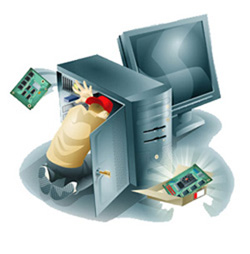Computer Randomly Powers Off, Basic Troubleshooting and Repair
So your using your computer happily, going about your business perhaps surfing the web, streaming video, playing games or just about anything else, but then suddenly screen goes blank and computer goes silent as though the power has been cut. Strange... so you power it back on again and not long after the same thing happens again. What could be going on here?! First thing is to decide just how random the powering off is, can it happen any time at all, within a few minutes of starting the computer, or can it take several hours. This can be a good indicator as to if the fault is thermal, or if it's a faulty inside one of the components. Totally random symptoms would more indicate a faulty board and a thermal fault would be indicated by the fault being produced when they computer is under high stress or been on a long time. Well, let's go through the components inside the PC, and which of them could be the problem.
|
 |
|
1: Case - Modern computer cases are designed with airflow in
mind, much like a race car is tested in a wind tunnel, computer cases are
designed to move air round the inside of a computer in a way that helps promote
system cooling. You should always operate your computer with the sides on and
the case secured. |
 |
Troubleshooting step 1: step 2: |
|
Step 3: step 4: Step 5: By this point you should now have a working unit again. |
|